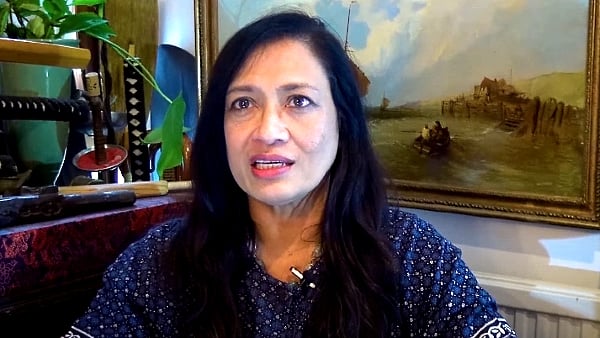News

BANGKOK : Online scam centres driven by human trafficking have become a global threat in the digital age. The International Criminal Police Organisation (Interpol) has revealed a recent crime trend, stating that “human trafficking-fueled scam centres” have rapidly expanded their networks from Southeast Asia to new areas in West Africa, the Middle East, Central America, and worldwide in recent years. In its March 2025 report, Interpol stated that victims from at least 66 countries have fallen prey to human trafficking and forced labour in online scam centres. Seventy-four per cent of victims were taken to the traditional “hub” areas in Southeast Asia, while scam centres in other countries are emerging, with West Africa potentially becoming the new hotspot for this type of crime. Many human trafficking victims are lured through fake job advertisements, then detained in compounds and forced to engage in online fraud, including investment scams, money transfers, romance fraud, and online gambling. Those who resist are often threatened, and some face brutal abuse or even torture. While not all workers in scam centres are human trafficking victims, those coerced into committing crimes are often intimidated with debt, forced to work endlessly, and some endure severe psychological distress. Another form of victimisation involves those deceived online in other parts of the world, who lose large sums of money and, in some cases, their financial stability. Interpol describes these online scam centres as a “double-edged threat,” impacting both those forced to commit fraud and victims deceived through screens from other countries. The trend has intensified since 2023, prompting the issuance of an urgent Orange Notice to warn of the serious and escalating threat. International operations coordinated by Interpol with police forces from various countries have uncovered multiple cases of human trafficking for forced criminal activities. For example, in 2024, authorities raided a large scam centre in the Philippines, and in Namibia, a centre was dismantled where 88 young people were forced to engage in fraud. Police seized 163 computers and 350 mobile phones for investigation. In addition to forced labour and systematic deception, Interpol has also warned that the use of artificial intelligence (AI) is becoming a new tool for criminals. AI is being used to craft highly convincing fake job advertisements and create deceptive profiles and images through Deepfake technology to lure victims into various scams, such as romance scams or sextortion. These criminal networks also use the same trafficking routes to smuggle drugs, weapons, and protected wildlife, such as tigers and pangolins. This means that “scam centres” are no longer just hubs for cybercrime, but are increasingly becoming epicentres for a variety of transnational crimes. Interpol’s data also highlights the profile of “human trafficking facilitators,” key drivers behind this crime. Over 80% are male, and 61% are aged between 20 and 39 years. Meanwhile, 90% are of Asian descent, with 11% from Africa or South America, reflecting the complexity of global criminal networks. Cyril Gout, acting Director of Police Services at Interpol, emphasised that addressing this threat requires […]
12 h ago
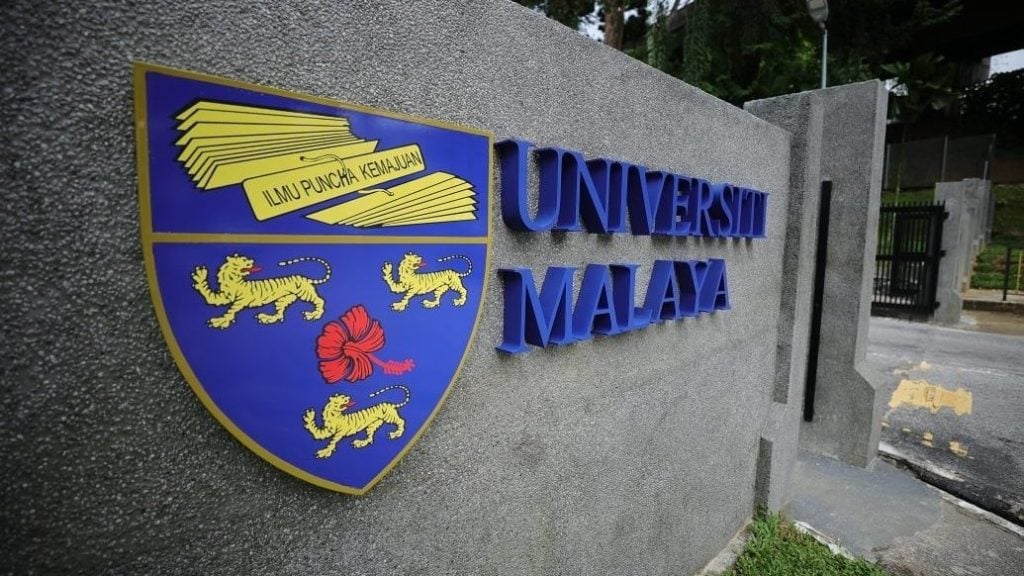
KUALA LUMPUR: University of Malaya Association of New Youth (UMANY), a Universiti Malaya (UM) student group, is urging the university to disclose admission figures through open channel called SATU which has sidelined the enrolment chances of STPM students. In a statement, the UMANY said according to the data released, a total of 337 students were admitted to the dentistry programme where only two of them were STPM holders in 2023. A total of 102 students studying dentistry were admitted through SATU, where students paid tuition fees equivalent to private universities. “This indicates a preference for students who can afford higher fees,’’ it said. UM Vice-Chancellor Professor Dato’ Seri Dr Noor Azuan Abu Osman recently denied that the SATU was reducing the number of places available to students applying through the centralised UPU system, a platform for STPM students to apply to public institutions of higher learning, where students pay affordable fees in public universities. SATU offers more options for outstanding students and reduces the burden of studying abroad according to Professor Dr Noor Azuan. UMANY also criticised UM for failing to disclose how many SATU students recruited by the university were rejected by the UPU system earlier, raising concerns about a lack of transparency in the admissions process. Additionally, UMANY said university raised tuition fees for the medical programme from RM300,000 to RM500,000, citing upgraded teaching facilities without providing clear cost breakdowns. In the statement, UMANY also said that although the university acknowledged that some SATU students face financial difficulties, it continues to enforce a zero-balance policy—requiring full payment before financial aid or loans are disbursed—causing significant financial stress for many students. Responding to Associate Professor Dr. Adelina Asmawi, who said in a post on social media that the purpose of SATU is to provide an alternative source of funding for universities, as the government had significantly reduced subsidies and financial aid for public institutions, the group said as a public university receiving government allocations, UM should uphold a fair and inclusive admissions policy rather than shift toward high-cost, market-oriented education. It also warns against turning public universities into profit-driven institutions.
17 h ago
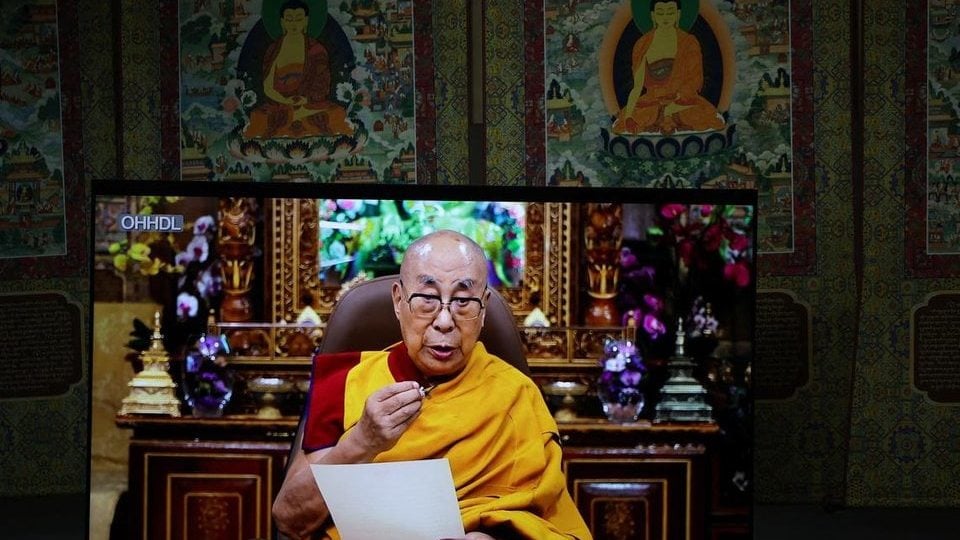
BEIJING – The Dalai Lama said only his organisation can recognise his reincarnation, a statement that Beijing has swiftly rejected amid a renewed tussle over who has the right to appoint the spiritual leader of Tibetan Buddhism, as it insists that any successor must be approved by the Chinese government. In a recorded video statement on July 2, the exiled Tibetan spiritual leader, whom Beijing regards as a separatist, reiterated that only the Gaden Phodrang Trust he founded “has the sole authority to recognise the future reincarnation”. “No one else has any such authority to interfere in this matter,” said the Dalai Lama, whose statement comes four days ahead of his 90th birthday on July 7, in a clear rebuke to China, which annexed Tibet in 1951. He also affirmed that he will have a successor upon his death, ending years of speculation that began when he previously indicated that he might be the last person to hold the role. Many observers widely expect China to name its rival successor to the Dalai Lama post, as a Beijing-backed leader would help legitimise its rule in Tibet, which has long resisted full assimilation into Chinese culture. At the regular media briefing on July 2, Chinese Foreign Ministry spokeswoman Mao Ning said the Dalai Lama’s succession must comply with religious rituals and historical conventions as well as Chinese laws and regulations. “The reincarnation of the Dalai Lama, the Panchen Lama and other grand living Buddhas must go through the golden urn lottery procedure and be subject to the approval of the central government,” she said. The lot-drawing system, where names are drawn from a golden urn, was introduced during the Qing Dynasty in 1793. The current 14th Dalai Lama was himself identified in “strict accordance with religious rituals and historical conventions” after the passing of the 13th Dalai Lama, and was informed after being granted exemption from the lottery by the then central government, said Ms Mao. Critics, however, say that the reincarnation process is guided by spiritual signs and not a state-administered lottery. Some argue that the lottery system is being wielded as a political tool to assert Beijing’s control over Tibetan Buddhism and is part of its broader Sinicisation campaign to assimilate all religions into Chinese culture. The present Panchen Lama – the second-highest-ranking leader in Tibetan Buddhism – was appointed by Beijing after the previous figure died in 1989. Earlier in June, he met Chinese President Xi Jinping, pledging support to the leadership of the Communist Party of China and saying he would work to align Tibetan Buddhism more closely with Chinese values. The Dalai Lama had identified a successor to the Panchen Lama post when the previous figure died, but the successor, a child, was allegedly taken away by the Chinese authorities. At the media briefing, Ms Mao said China’s policy of Sinicisation of religions is not to restrict religion from growing and prospering. “It has to adapt itself to the traditional and development stage of the country. Tibetan Buddhism was born in China and itself is an example of religion adapting to […]
24 h ago
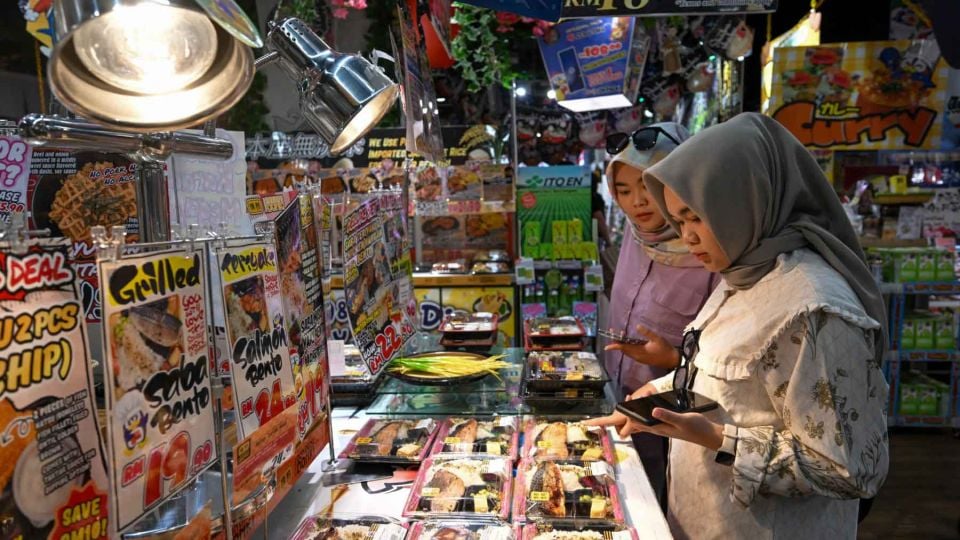
PETALING JAYA : Consumers should brace themselves for a gradual increase in prices of goods following the implementation of the new electricity tariffs effective July 1, say business groups. This is because manufacturers and those in the affected sectors may not be able to absorb higher costs and would likely pass on to consumers. SME Association of Malaysia president Chin Chee Seong said it is too early to gauge the overall increase in electricity bills for businesses. “It is difficult to say how much their electricity bills will increase at the moment. “Talk among some SMEs is that there is likely to be at least a 20% increase in electricity bills,” he said when contacted yesterday. Chin said the association will gather feedback from its members to determine how much more they have to pay for their electricity. Asked whether the SMEs will absorb the higher electricity costs, Chin said it is unlikely. “Most of them would not absorb the cost and pass it down to either their supply chain or consumers. “We should expect to see an increase in prices, especially among the SMEs, food and beverage, and the retail sectors,” he said. Federation of Malaysian Business Association vice-chairman Nivas Ragavan said some businesses may try to absorb the electricity cost increase, but not entirely. “Manufacturers have always tried to absorb cost increases where possible through efficiency measures and cost optimisation. “However, with rising cumulative costs such as raw materials, logistics, labour and now energy, many, particularly the SMEs and export-driven businesses with thin margins, will not be able to absorb the full cost,” he said when contacted yesterday. He said the manufacturing sector is expected to see its electricity bills increase between 5% and 7%. “For energy-intensive industries, the impact could be more significant, especially if they are not eligible for the Imbalance Cost Pass-Through rebate,” he added. As a result of this, Nivas said that it is likely that some portion of the increased energy cost will be passed down the supply chain. “This could take the form of adjusted pricing to downstream partners and eventually may have an impact on consumer prices, depending on the sector and product,” he said. He noted that some manufacturers will try to minimise the increase in cost where possible to remain competitive, especially in global markets. Federation of Malaysian Manufacturing (FMM) president Tan Sri Soh Thian Lai said the new electricity tariffs will not have a uniform impact on the manufacturing sector and will vary according to electricity usage. “FMM understands that 70% of medium voltage customers, many of whom are industrial users, will have a reduction in electricity bill ranging from 4% up to 18% depending on the load factor. “The higher their load factor, the higher the reduction in their bills,” he said when contacted yesterday. However, Soh said the remaining 30% with a low load factor may see an increase of between 3% and 10% in the electricity bills. “Some customers in this category have installed solar […]
24 h ago

TOKYO : Strong demand from inbound tourism has significantly driven up land prices in tourist destinations nationwide, a trend extending to areas around the 2025 Osaka-Kansai Expo. According to an announcement by the National Tax Agency on Tuesday, land prices rose year-on-year in 35 prefectures, and the national average increased for the fourth consecutive year. Popular ‘Little Kyotos’ A 55-year-old Belgian tourist was seen smiling as she looked at a “sarubobo” (monkey baby) — a local folk artwork — in Takayama, Gifu Prefecture, on June 25. She said that a guidebook sparked her interest in the culture and nature in the area and that she found the traditional wooden buildings to be amazing. Takayama is popular for its old townscape, which comprises historic sake breweries and traditional houses. Last year, the city, dubbed “Hida’s Little Kyoto,” saw its foreign overnight visitors surge to about 769,700, an increase of 70% compared to the previous year. That number is a record high, significantly surpassing the pre-pandemic figure of about 612,000 in 2019. Reflecting this popularity, land prices in the area along Kami-Sannomachi Shimo-Sannomachi-dori street, located in the central part of the city, rose by 28.3% this year compared to the previous year, the fourth highest increase in the nation. According to the city’s historic townscape preservation association, the surge in demand driven by inbound tourism means that buyers are quickly found even for shops on the main street of Kami-Sannomachi that closed due to the aging of their owners. The trend has left the street with almost no vacant properties. At the Sumiyoshi Ryokan inn with a more than 100-year-old building located along the Miyagawa river, a stream famous for its morning market, more than 90% of guests are inbound tourists. “We’re almost fully booked until September,” said Tsunetada Minami, 50, who manages the inn. “International travelers are essential for the survival of our business.” Spreading on social media Even in Tokyo, where land prices saw the highest increase among all prefectures at 8.1%, it was mainly inbound tourism that was responsible for the rise. Land prices on Kaminarimon-dori street in Asakusa, Tokyo, recorded a 29% increase, the third highest nationwide and the highest in Tokyo. Nakamise-dori shopping street in the district is bustling with foreign tourists posing for photos in kimonos and buying souvenirs. “Events like Sanja Festival have spread on social media, increasing their popularity among foreigners,” said Shigemi Fuji, 76, chairperson of the Asakusa Tourism Federation. Meanwhile, it has also been pointed out that the number of Japanese visitors to Asakusa has been decreasing. “Some rickshaw drivers have days when all their passengers are foreign tourists,” said Takashi Sudo, 45, manager of Isshin, which operates a rickshaw service. Appeal of Expo Although the Osaka-Kansai Expo, which opened in April and is being held on the artificial island of Yumeshima in Konohana Ward, Osaka, had yet to open at the time of the land price assessment, speculation over associated redevelopment projects has still boosted land prices in the ward. The […]
2 d ago

PETALING JAYA: Many consumers are taking steps to manage their electricity bills with the implementation of the new tariff structure by the government. For example, many homeowners are considering having solar photovoltaic (PV) systems installed on their roofs, while others are looking at the “Time of Use” scheme, which offers lower rates during off-peak hours, now defined as starting from 10pm to 2pm on weekdays, and the entire day on weekends. Under the new tariff announced by the Energy Commission, domestic consumers using less than 1,000kWh (kilowatt-hours) per month will also continue to enjoy subsidies, effective yesterday. In Johor Baru, sales operations executive Ereena Karen Lim Abdullah, 47, and her husband are thinking about rooftop PV. “My husband and I are thinking of installing solar panels, but we are unsure whether it is possible to do so at our apartment,” she said, adding that she would raise the matter with the building management soon. “I used to pay around RM100 for electricity monthly but it had crept up to RM150 even though it is just me and my husband living in our apartment without much changes to our routine.” Events planning manager Evelyn Lee, 34, said she was hoping to apply for the newly expanded Time of Use (ToU) tariff as soon as possible since it matches her lifestyle. “My husband and I are seldom at home during the day, so it’s perfect for us since we are typically home only by 10pm. “We also like to spend our weekends at home together, just relaxing with our dogs with the air conditioning on, so it makes sense,” said Lee, who lives in Puchong. In Seremban, Tong Sim Old Folks Home secretary Jessie Chan said they had already been cutting back usage before the new tariffs. “The 18 elderly and special needs folks at the centre have been told to cut down (on their use), resulting in our monthly bill going down slightly from the over RM400 previously,” she said. Ramesh Patel, who runs the Vivekananda Home in Rembau, has also told the children under his care to start conserving. “We went from switching on four lights throughout the night previously, to only one now to further reduce the monthly bill which totals about RM800.” Retiree N. Manimaran from Perak said he would start consolidating his chores. “We now do the laundry only once every two days, while clothes are ironed once per week. I’m also cutting down the hours the air conditioner is on from six to four,” said the 67-year-old. Father-of-four Wan Fahmi Ahmad said getting his household to change their habits would be difficult as they do not know how the new tariff structure would affect their bill. “We are used to using around 1,500kWh to 2,000kWh, and paying over RM1,000 every month, so convincing them will be hard, especially if our bill increases only by a small amount,” the 51-year old pilot said. Wan Fahmi, who lives in Putrajaya, added that he would consider the ToU scheme […]
2 d ago
Opinion

For several consecutive weeks, Sin Chew Daily featured the issue of Malaysian Chinese population structure. The trend of declining birth rates among the Malaysian Chinese began over 20 years ago, which leads the community to become an aging society. Today, the entire demographic structure of the Malaysian Chinese community has changed. Changes in the population structure do not occur overnight. Even if we are powerless to reverse the trend of population decline and aging, we must not ignore it. At the same time, we should begin to reflect deeper on future direction. Chinese education will likely be the most impacted by the population decline. Let me begin with the birth rate of Malaysian Chinese newborns. The year 2024 was a Dragon Year, traditionally a peak period for births due to cultural beliefs. However, according to the Department of Statistics Malaysia (DOSM), in the first three quarters of 2024, the number of newborns among the Malaysian Chinese decreased compared to 2023. Although there was a slight rebound in the fourth quarter, the overall number still fell short of the previous year. In Q1 2024, the number of Chinese newborns was 9,372, a drop of 2,062 or 18% compared to 11,434 in Q1 2023. In Q2, there were 9,786 newborns, down 1,291 or 11.6% from 11,077 in 2023. In Q3, the number was 10,427, a decrease of 735 or 6.6% from 11,162 in 2023. Only in Q4 did the number rise to 11,685, a 4.65% increase over 11,142 in 2023. In 2024, there were 41,270 newborns in total, 3,545 fewer than the 44,815 recorded in 2023. According to data released by Huayan (the Centre for Malaysian Chinese Studies) in May, the birth rate among Malaysian Chinese has fallen by 60% over the past 23 years — averaging a drop of 2,559 babies per year. In 2023, each quarter still recorded five-digit Chinese birth figures, but by 2024, the first two quarters had already fallen into four-digit territory. It is now hard to imagine that in the year 2000, the Chinese community had six-digit annual births — as many as 115,000 newborns. Let’s assume that all 41,270 Dragon Year babies born in 2024 will enter Chinese primary schools (SJKCs) in 2031. With 1,304 SJKCs nationwide, that’s an average of only about 32 new year one pupils per school. If we further assume that half of these schools are under-populated schools with fewer than 150 students (currently, there are 614 such schools) and also consider urbanisation (with more Chinese families moving to cities), plus those who opt for private or international schools, then it’s likely that few Chinese schools will have 100 year one pupils in 2031. Next, if we suppose that half of the 2024 Dragon Year babies will enter independent Chinese secondary schools in 2037, the 63 independent schools across the country would average 327 new junior one students each. Following this trend, by the time this cohort reaches senior three (Form Six), the number of independent schools with over 2,000 students […]
2 d ago
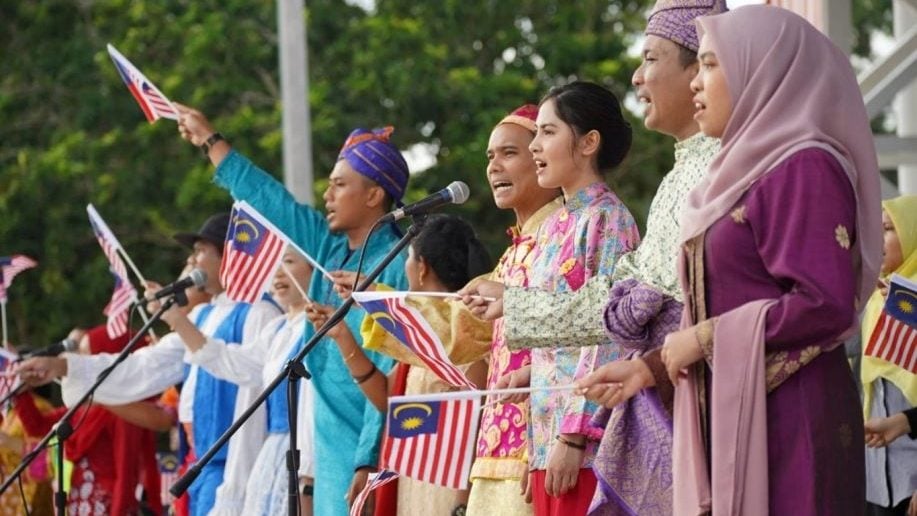
I remember when I was a child taking art classes, our teacher would always ask us to draw the national flag during the National Day month. Back then, the children might not have accurately sketched the actual design of the Jalur Gemilang, but with great enthusiasm, we poured our patriotic feelings onto the blank paper, each expressing creativity in our own way. In that moment, the children’s sense of patriotism was quietly awakened. They were bold and full of love for the country. No one would scold them for drawing a flag missing a stripe or a corner. Their creativity came purely from their heart not from rigid pressure imposed by adults. Later, the late patriotic singer Sudirman Arshad, during the closing ceremony of the 15th SEA Games in 1989 at the National Stadium, entered the venue wearing an outfit made of the national flag, shouted “Merdeka” three times and sang “To Know Malaysia is to Love Malaysia”, uniting the patriotism of both the audience in stadium and television viewers. No one accused him of “desecrating” or offending the beloved Jalur Gemilang. That was the golden era of Malaysia, when people wrote patriotic songs one after another. At the time, love for the country stemmed from heartfelt recognition, not fear of punishment. In the name of patriotism, we established guidelines for the use of the Jalur Gemilang. While the intention was to guide citizens to respect the national flag, the unintended effect was planting a sense of fear around its use, gradually suppressing people’s natural creativity and enthusiasm. People now fear that a small mistake in displaying or designing the national flag might lead to irreversible public outrage and punishment. The desire to show patriotism might instead become the spark for disaster. I believe that patriots would never maliciously insult, burn, desecrate or provocatively display the national flag. But for honest mistakes, we should respond with understanding and compassion, offering the offenders opportunities to learn and rectify—not treating them as treason. Recently, Malay tabloid Sinar Harian sparked a controversy when it re-used an old design template while creating an infographic for the new Inspector-General of Police, Datuk Seri Mohd Khalid Ismail, and failed to remove outdated information. In the past, media that made such errors would promptly clarify and correct them; if the mistake was severe, they would issue a public apology. The matter would usually settle soon after. Today, however, the norm is immediate police reports, intense public backlash and investigations that may lead to senior editors being suspended or dismissed. This toxic culture has left media workers living in deep fear and severely undermines the development of press freedom. Ensuring accuracy and quality contents are the professional duties of journalists. But we are all human—mistakes can happen. Society should give media space to correct, improve, and raise their standards. Chief editors and senior editorial teams work under tremendous pressure. Every day, they must complete editing and decide within tight deadlines, bearing full responsibility for headlines, texts and images. […]
5 d ago











